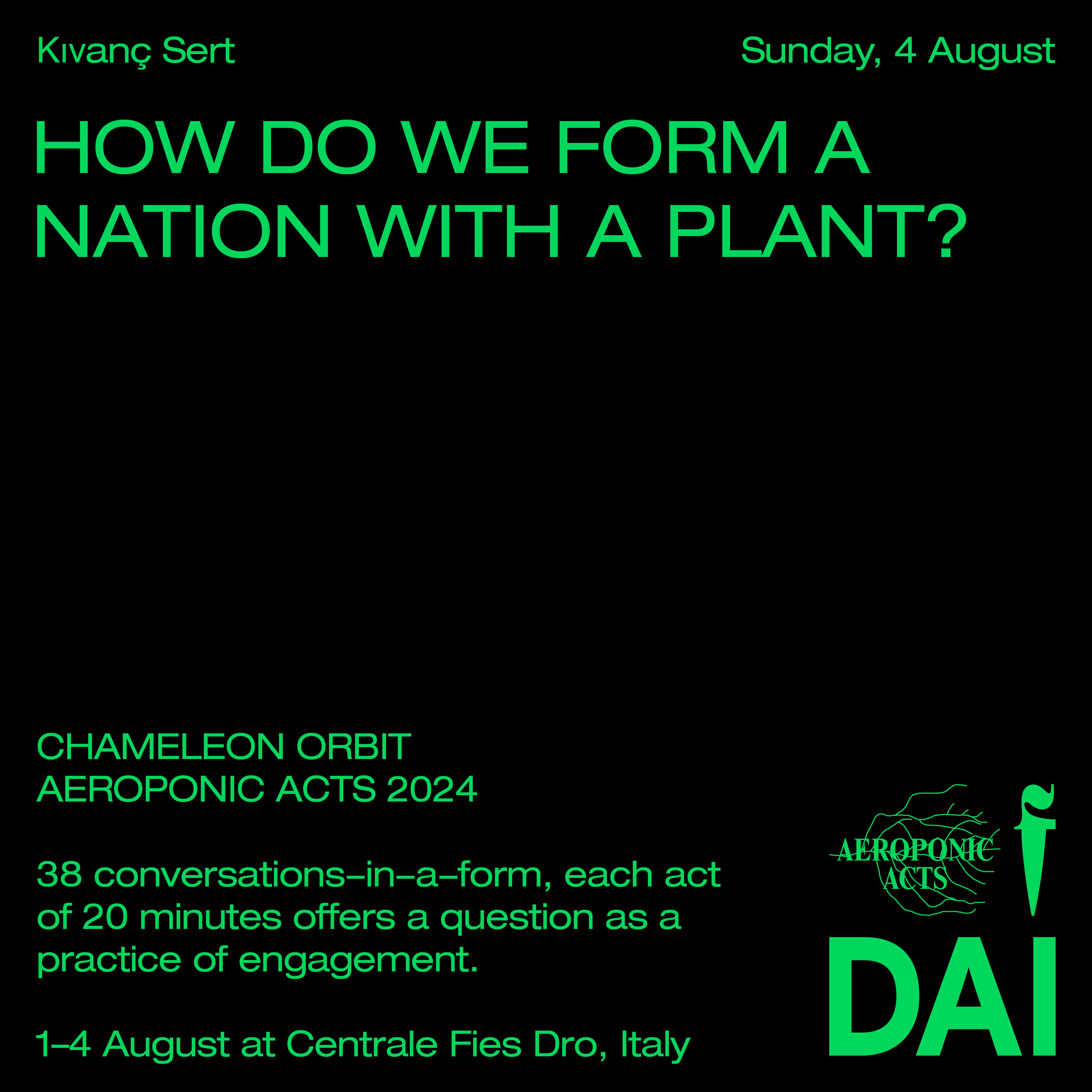Kıvanç Sert ~ Tea and Land, Story of Cultivation of Cultivator
Here we are, on a 1 piece of land, within a nation and a plant. Imagine vast green hills, lined up together, forming the landscape around us. We stand on a field near one of those hills, surrounded by more green hills, all cultivated and filled by a Nation. Today, here, all the plants are the same, united in monoculture like a nation-state. How did we end up in here like this?
What happens when you change the seeds? Cultivating a plant means cultivating a society, they say.
Let me tell you a story of tea and land, as we keep moving and listening around those hills.
One day, in a 1 single nation, the decision is made: they want to drink tea. The order is given to bring tea seeds to the land. The seeds arrive, and now it is time to change—change the seeds. A change of a land with 1 tea.
AEROPONIC ACTS 2024 ~ Chameleon Orbit


